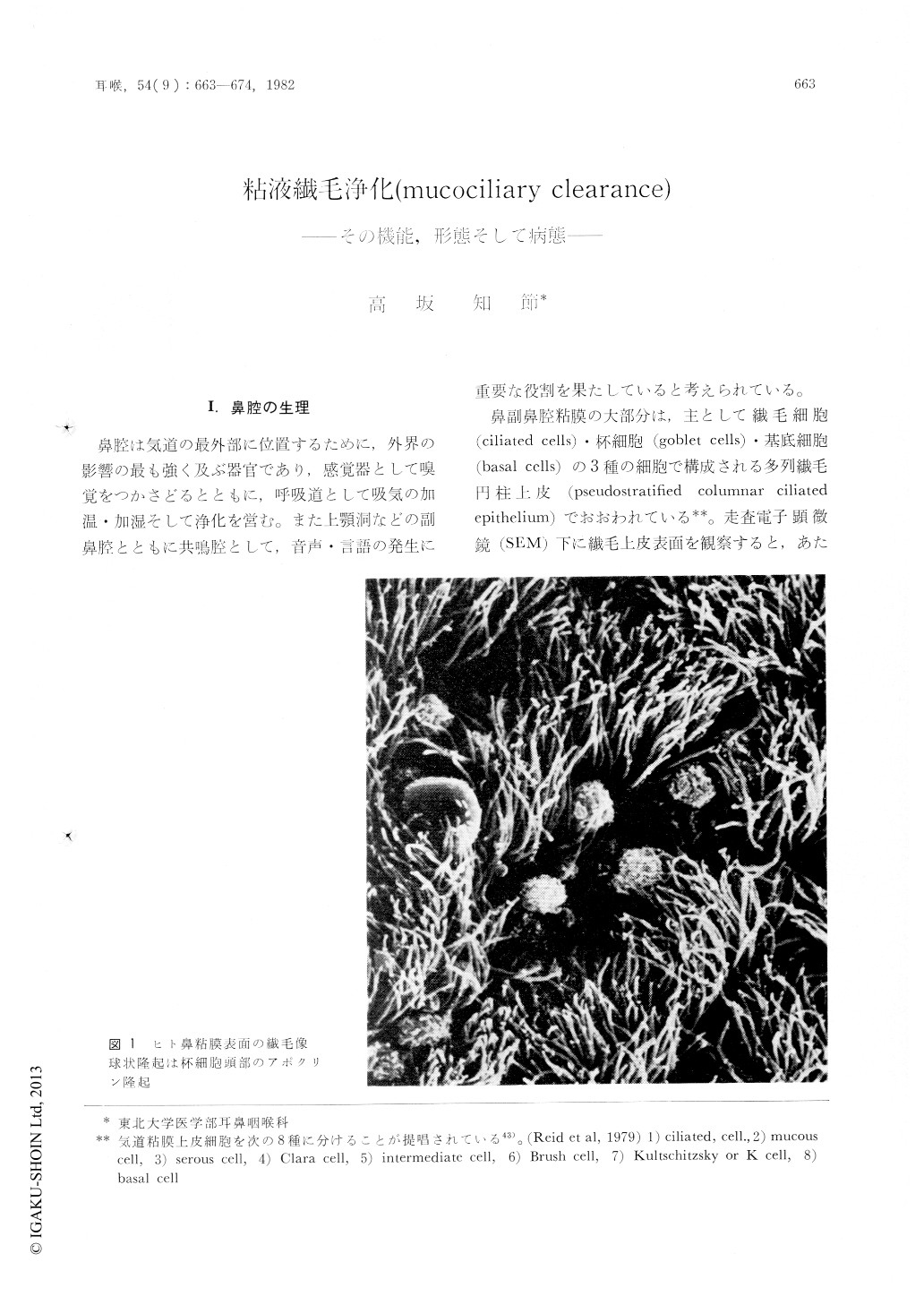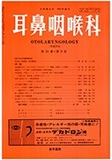Japanese
English
- 有料閲覧
- Abstract 文献概要
- 1ページ目 Look Inside
I.鼻腔の生理
鼻腔は気道の最外部に位置するために,外界の影響の最も強く及ぶ器官であり,感覚器として嗅覚をつかさどるとともに,呼吸道として吸気の加温・加湿そして浄化を営む。また上顎洞などの副鼻腔とともに共鳴腔として,音声・言語の発生に重要な役割を果たしていると考えられている。
鼻副鼻腔粘膜の大部分は,主として繊毛細胞(ciliatcd cells)・杯細胞(goblet cells)・基底細胞(basal cells)の3種の細胞で構成される多列繊毛円柱上皮(pseudostratified columnar ciliatedepitllclium)でおおわれている**。走査電子顕微鏡(SEM)下に繊毛上皮表面を観察すると,あたかも大草原をみるような,えんえんと続く繊毛の密生像に出合うことができる。(図1)
The mucocilary transport system is one of the most important functions of the upper respiratory tract. In the nasal cavity, the posterior 2/3 are covered by pseudostratified ciliated type mucous membrane. Foreign materials which precipitate in the mucous blanket are constantly transported towards the nasopharynx. The average speed of this transportation has been measured to be about 7mm/min±3mm by Quinlan et al in 1969. Metachronal waves formed by synchronous beatings of the cilia is a major power of this transportation. A frequency of the ciliary beating is estimated to be about 1,000 strokes per minute. Under a transmission electron microscope, a typical 9+2 arrangement of the axial filaments complex is found in most cilia, i.e. two central singlets and nine peripheral doublets. The energy for moving the cilium is supplied by the breakdown of ATP. Dynein arms, ATP-ase in the cilium, play an important role in the mechanisms of the ciliary motion.
Upper respiratory infections decrease the number of the cilia and occasionally form atypical cilia such as compound cilia. Various noxious agents such as chemicals and gases are also major causatives of the mucociliary transport dysfunction. This paper emphasizes that we have to take into consideration the fact that the ciliary motion and the property of the mucus are both an essential factor to maintain normal mucociliary clearance system.

Copyright © 1982, Igaku-Shoin Ltd. All rights reserved.


